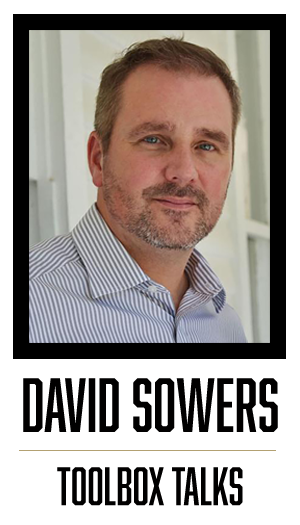While recently attending a Human Performance Improvement conference, I had the opportunity to talk with a first-time attendee named Joe. I had been to this conference several times but was interested in how the information was being received by a newcomer. As expected, he found much of the information to be interesting and helpful but was having a hard time seeing the big picture and putting it all together.
 This is a common response. Often, we spend a great deal of time talking details with the veteran conference goers and forget about the basics for the first-timers. Joe mentioned that he enjoyed golf and thought about Human Performance in terms of minimizing risk. “If I hit a bad shot, I shouldn’t take unnecessary risks to try to get back on track. Accept the loss and make decisions to minimize risk moving forward.” This was a good analogy about a specific concept in risk-reduction, but we needed to back up and understand the big picture better too. We kept pulling the string on the golfing analogy and it seemed to help his understanding of performance improvement.
This is a common response. Often, we spend a great deal of time talking details with the veteran conference goers and forget about the basics for the first-timers. Joe mentioned that he enjoyed golf and thought about Human Performance in terms of minimizing risk. “If I hit a bad shot, I shouldn’t take unnecessary risks to try to get back on track. Accept the loss and make decisions to minimize risk moving forward.” This was a good analogy about a specific concept in risk-reduction, but we needed to back up and understand the big picture better too. We kept pulling the string on the golfing analogy and it seemed to help his understanding of performance improvement.
If you want better performance in golf or in your organization (fewer errors, better accuracy, less mulligans, better numbers), you need three major elements that all work together: Give your player the right tools, coach them on how to use them, and then fix the environment to set them up for success. Again, each of these elements need to be present to ensure your greatest success.
You could take a golfer who doesn’t need any coaching and give them Coke bottles taped to the ends of broomsticks and they could get it done, but not very well. You could give a novice a set of Honma Beres golf clubs (about $70,000 for the set … yeah, that’s a thing) and hope they can shave a stroke or two on their own. When it comes to making better players/workers, your best path for success would be to give them good tools and coach them on decision making and performance. But what we tend to do is nothing except to “coach” them by repeatedly saying “be better golfers” and wonder why performance isn’t improving.
Notice the missing third element. Even if we give the player a good set of clubs and a golf coach, they will be limited in how well they can perform based on the course we put them on. If every hole has three sand traps, five water hazards, and a six-foot wide fairway, their odds of shooting par are pretty low. This is where we tend fail our people when it comes to performance improvement: We focus on the worker and don’t fix the system. If our work environment is full of hazards and traps, and they probably are, then our workers can’t perform optimally and continuously will be fighting the course. Don’t expect your workers to be scratch golfers after putting them in difficult environments. If we could set them up by making the job look like a putt-putt course, then we can maximize our results.
Your workers can marginally improve with practice and repetition, but to get great results you need to have a complete strategy: Give them the right tools, teach them how to use them, and make the work environment more conducive to success.
Toolbox Talks offers quick insights and thoughts to use for your toolbox (tailboard) talks. Dave Sowers is a founding member of Knowledge Vine, a veteran-owned human performance training and consulting organization that strives to reduce the frequency and severity of human errors in the workplace. He has almost 30 years of experience in power generation and the utility industry. He is a veteran of U.S. Navy Nuclear Power Program and holds a bachelor’s degree in resources management and a master’s degree in both management and emergency management and homeland security.



